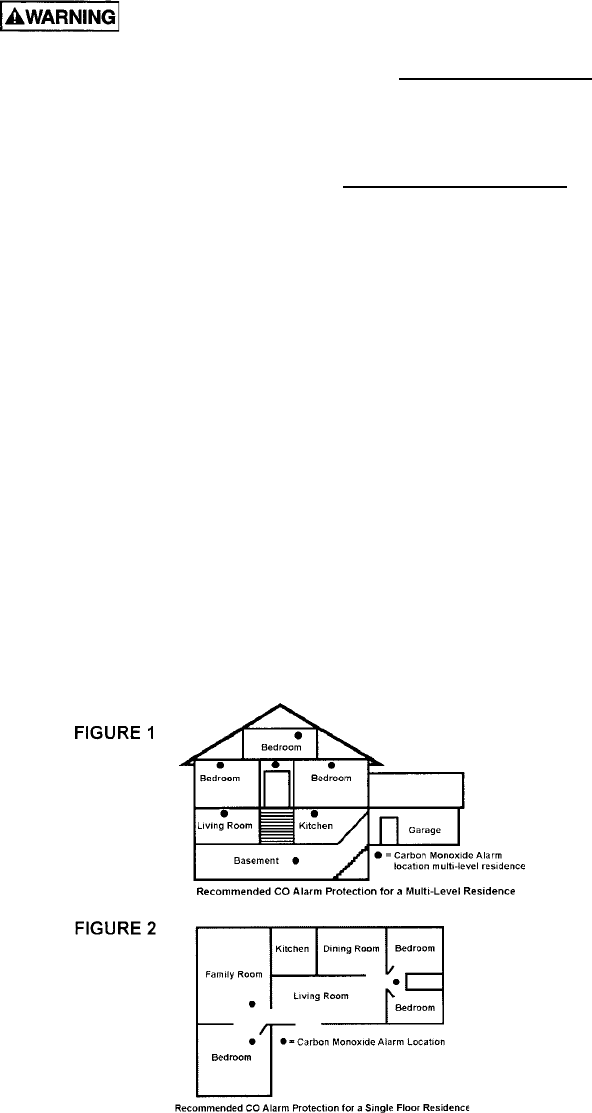
Page 2
Activation of this device indicates the presence of carbon monoxide
(CO) which can kill you. If alarm sounds:
1. Operate test/reset button;
2. Call your emergency services, fire department or 911;
3. Immediately move to fresh air - outdoors or by an open door/window. Do a head count
to check that all persons are accounted for. Do not reenter the premises nor move
away from the open door/window until the emergency services responders have arrived,
the premises have been aired out, and your alarm remains in its normal condition.
4. After following steps 1-3, if your alarm reactivates within a 24 hour period, repeat steps
1-3 and call a qualified appliance technician; to
investigate for sources of CO from fuel burning equipment and appliances and inspect
for proper operation of this equipment. If problems are identified during this inspection,
have the equipment serviced immediately. Note any combustion equipment not
inspected by the technician and consult the manufacturers' instructions or contact the
manufacturer(s) directly for more information about CO safety and this equipment.
Make sure that motor vehicles are not, and have not been, operating in an attached
garage or adjacent to the residence.
INSTALLING THE ALARM FOR RESIDENTIAL USE
LOCATION
One of the most important considerations in any CO alarm system is the location of the
alarms. Statistics of the National Fire Protection Association (NFPA) show that most of the
fatal CO occurrences happen at night while people are sleeping.
Early warning of CO is best achieved by the installation of CO alarms on all floors and
areas of the household including attached garages. Placement of a alarm in a garage may
cause an alarm due to CO from automotive exhaust.
RECOMMENDATIONS
– Put a CO alarm inside each bedroom where the occupant closes the door while sleeping.
Particulate smoke can be blocked by a closed door, but CO fumes are likely to get
through.
– A CO alarm should be installed in any family living unit containing a fuel-burning appliance
or fireplace or having an attached garage.
– A CO alarm should be centrally located outside of each separate sleeping area in the
immediate vicinity of the bedrooms. Where bedrooms are separated and audibility of the
alarm to occupants within the bedroom area could be seriously impaired, more than one
unit could be needed.
(Phone No. )
(Phone No. )









